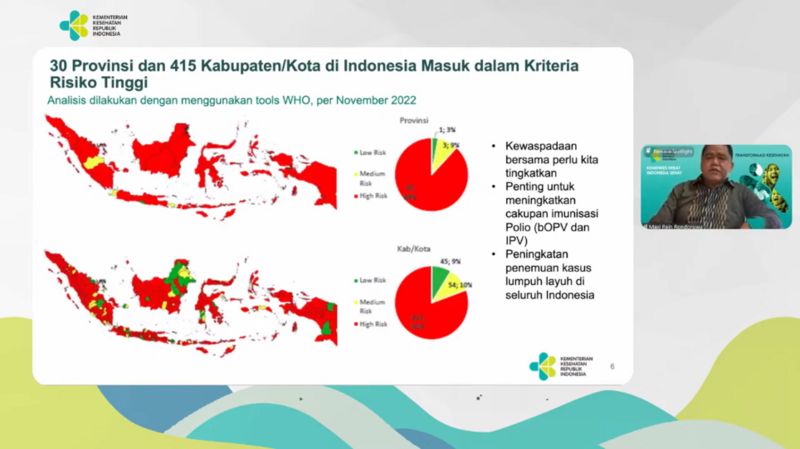Recently, there have been many issues related to academic misconduct,...
Read More

We already know Polio is a dangerous infectious disease that can cause paralysis. This disease tends to attack children under the age of 5 years. Not only does it cause permanent paralysis, but this poliovirus can also attack the brain’s nerves, which will cause a person to become weak. According to Kompas, of all sufferers who experience paralysis, around 2-5 percent of cases can be fatal and half experience permanent paralysis.
One effort to prevent polio is by way of immunization. Immunization is a way to acquaint the body with certain viruses without making the body sick. This immunization has been intensified continuously in all regions of Indonesia, to reduce transmission and morbidity rates in toddlers. This method is quite adequate, as proven in 2014, Indonesia got a polio-free certificate from the World Health Organization.
But unfortunately, Indonesia was shocked by the findings of the Polio case in the Pidie Aceh area lately. A total of 3 children were reported positive for the polio virus. The Ministry of Health stated that the 3 children found had not been categorized as Polio cases because these 3 children did not meet the criteria for acute flaccid paralysis. They were only positive for the polio virus in an in-depth examination of their bodies (found in their feces). After a thorough examination, the strongest suspicion that caused these 3 children to contract the polio virus was poor sanitation.
Poor sanitation can ease the spread of the polio virus. The polio virus is transmitted through feces, which then develops in the digestive tract. An unclean environment makes this virus spread quickly. From the existing cases, after further investigation, it turned out that these 3 children lived in an environment that paid little attention to cleanliness. According to the Ministry of Health, people in the area still habitually defecate in rivers. Thus, this is the main factor for infection of the polio virus, in addition to the incomplete immunization factor.
Many factors affect incomplete immunization coverage. Quoted from the BCC Indonesia website, the discovery of this case is in line with the decline in immunization coverage in Aceh and the island of Java in the last ten years. OPV immunization coverage data for the last four years shows the number of districts/cities in Aceh that are given red status, this means that immunization coverage is below 50%, and continues to grow. The IPV will be even worse in 2022, all districts/cities in Aceh will receive red status. The Ministry of Health and WHO conducted a rapid survey about polio cases in Aceh. They found that out of 30 children in 25 households, only a small number had received the OPV vaccination, and none had received IPV.
However, the situation in other regions is not much better either. OPV4 immunization coverage throughout Indonesia in 2021 will reach 80.2%, down from the previous year of 86.8%. Meanwhile, IPV coverage has increased from 37.7% in 2020 to 66.2% in 2021 but is still below the target. According to the latest analysis as of November 2022 using WHO tools, as many as 30 provinces and 415 districts/cities in Indonesia are at high risk.
The COVID-19 pandemic is one of the reasons for the decline in immunization coverage, especially in areas that have accommodation and transportation problems. Besides many mothers with children, who are worried about coming to health services for fear of contracting COVID-19, many health workers have also died in handling this outbreak. Thus, many health workers are ultimately focused on dealing with COVID-19.
This problem is not only an additional burden for the government, but all lines must also be actively involved in handling it. A clean environment needs to be cultivated by every community. Defecating in the toilet and boiling water thoroughly can reduce increasing of the polio virus because the polio virus cannot withstand high temperatures. Besides that, policymakers must also launch programs that support the creation of this clean environment. With collaboration between existing stakeholders, existing problems can be resolved immediately.
By: Fakhrunnisa
Reference:
Recently, there have been many issues related to academic misconduct,...
Read MorePrihardanu et al. (2021) analyzed survey data related to indoor...
Read MoreBigBear.ai is a company at the forefront of leveraging artificial...
Read More